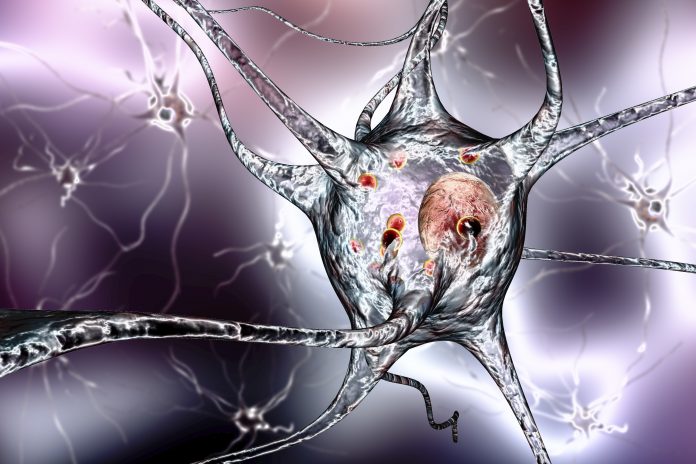
Research led by Nagoya University Graduate School of Medicine shows higher than normal levels of neurofilament light chain protein can be detected in the blood of patients with presymptomatic, early-stage Parkinson’s disease and dementia with Lewy bodies.
Writing in the journal npj Parkinson’s Disease, levels of tau and amyloid beta proteins were higher than normal in people with Parkinson’s disease and dementia with Lewy bodies, but only in those with symptomatic disease.
“These findings suggest that the proteins associated with comorbid Alzheimer’s disease pathology in Parkinson’s disease dementia and dementia with Lewy bodies are not present in the prodromal [early] phase, but instead develop after the onset of the disease,” said first author Keita Hiraga, a researcher at Nagoya University, in a press statement.
“On the other hand,… the elevation of neurofilament light chain protein in high-risk individuals, despite the absence of increased Alzheimer’s disease-related biomarkers, suggests that neurofilament light chain protein may be used to detect α-synuclein-induced neurodegeneration, a key marker of disease, in the prodromal phase.”
Parkinson’s disease and dementia with Lewy bodies are both neurodegenerative conditions linked to accumulation of intra-neuronal alpha-synuclein protein buildup. Although they have a distinct disease physiology, around 70% of patients with dementia with Lewy bodies and 50% of those with Parkinson’s related dementia have similar neurological pathology to Alzheimer’s disease patients such as build up of amyloid-beta and phosphorylated tau proteins in the brain.
This may indicate that newly developed and approved treatments for Alzheimer’s, such as lecanemab, could also benefit people with these conditions, but more research is needed to test this.
In this study, Hiraga and colleagues investigated whether people with Parkinson’s and dementia with Lewy bodies also have higher than normal levels of blood biomarkers linked to Alzheimer’s in the early, presymptomatic ‘prodromal’ stage of the two conditions.
Currently, it can be difficult to accurately detect who will go on to develop Parkinson’s disease or dementia with Lewy bodies. Physiological factors such as a decreased sense of smell, dysfunction of the autonomic nervous system, and rapid eye movement sleep behavior disorder –where people physically act out their dreams, are known risk factors, but can have other causes so are not always conclusive. For this reason, finding blood biomarkers that could also indicate risk status would be helpful for assessing who may need early treatment or interventions.
The researchers tested blood biomarkers in 84 patients with Parkinson’s disease, 16 patients with dementia with Lewy bodies and also 82 people at high risk (with at least two early-stage risk factors) and 37 at low risk of developing Lewy body disease (either Parkinson’s or dementia with Lewy bodies).
The team found that Alzheimer’s disease biomarkers were not present at higher-than-normal levels in the high-risk or low-risk groups but were seen in patients with Lewy body disease. However, neurofilament light chain protein was abnormally high in both disease groups and in those at high risk of Lewy body disease.
“Elevated neurofilament light chain plasma levels, even without elevated Alzheimer’s disease-related plasma biomarker levels, may indicate alpha synuclein-induced neurodegeneration in the Lewy body disease prodromal phase,” conclude the authors.











